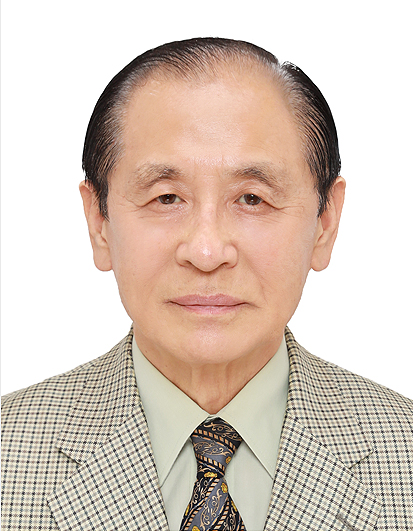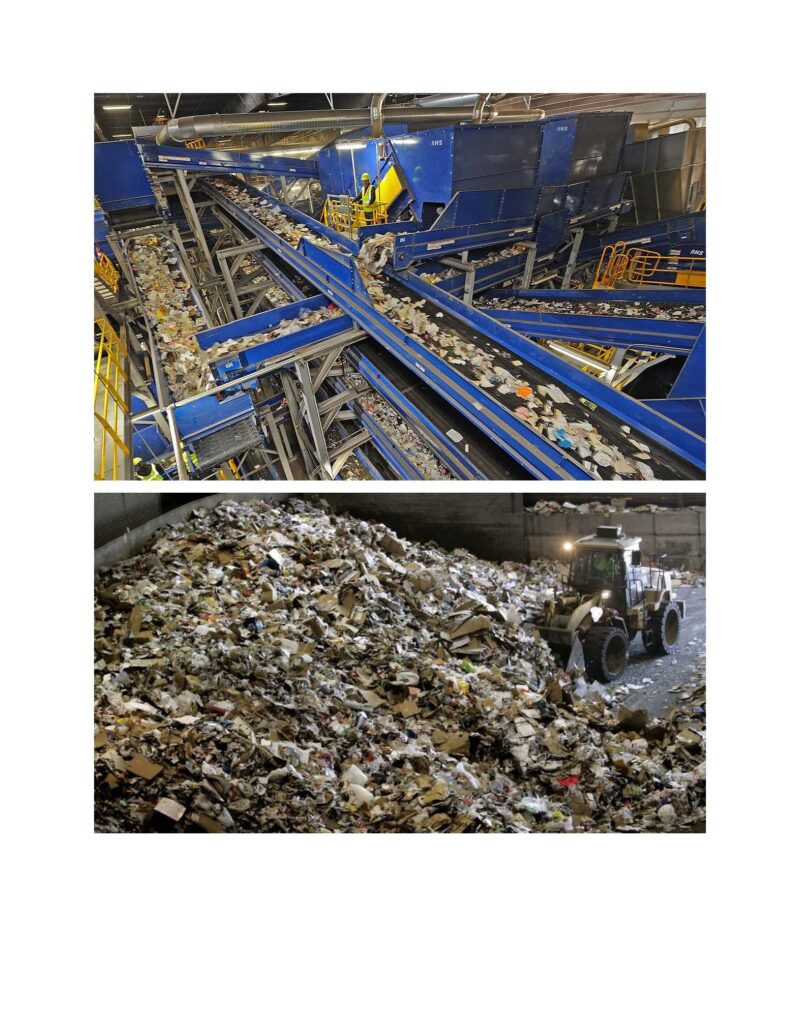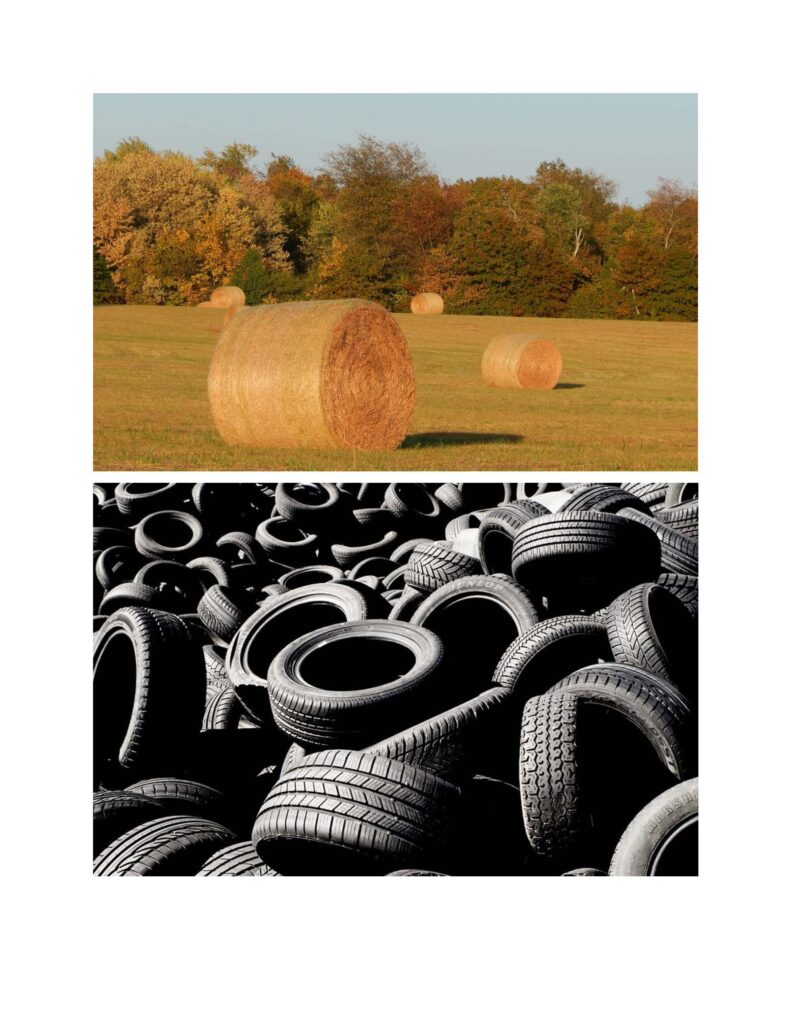Environmental Energy & Finance Corporation
The times are changing where Circular Economy / Reuse and Recycle of everyday Waste is the correct process to handle the millions of tons of waste produced yearly throughout the World.
Think Globally and Act Locally!
Environmental Energy & Finance Corporation (EEFC) enjoying 12-years of Domestic and International Development of Renewable Energy Projects throughout the World.
Currently EEFC is near completion of Developing several Projects in Northwest Arkansas (RECA), Cambodia Housing Project, Cambodia Solar Farm and Waste to Energy in the Bahamas.
Business Details:
Environmental Energy & Finance Corporation (EEFC) a S Corporation Incorporated in the State of Delaware and headquartered in Arkansas close to the headquarters of Walmart Corporation and California office near the State Capitol in Sacramento but still in the San Francisco Bay Area.
EEFC started with researching technologies that would eliminate MSW (Municipal Solid Waste) and produce a valued product of Electricity or Transportation Fuels plus not harm the Environment.
Soon after researching the equipment and the capital cost that is required for such Projects EEFC started researching Project Finance and Government Sovereign Guarantees to be able to create Project Finance to develop the projects.
The Founders of EEFC come from Logistics, Marketing, Wastewater, Technology, Finance and Development backgrounds that span over 50 years in different Companies and variety of assignments and successes.
The Renewable Energy Green Field has really taken hold only over the past 5 years and with the problems of “Global Warming” it is in the foremost thoughts of all Governments and Projects as what can be done to not pollute Mother Earth from all the Waste that is created.
Incorporated 2010 Delaware, USA:
EEFC from its inception decided to be a Developer of Renewable Energy, Solar, Wind, Hydro, Fuels and Power Plants and would not just sell one type of Equipment but review what the Project required then suggest the “best available technology”.
The Project Financing Package was developed by EEFC so the project can be presented to different types of Lenders to provide the stages of Financing required to build the Project.
What is needed in a Finance Package?
EEFC is a developer of Renewable Energy Projects in all the major methods to produce Renewable Energy, Pure Water and Fuels. EEFC develops projects and through the feasibility study and engineers report, the known requirements for the Project then selects “the best available technology” that will be the best match for the Project and meets the Project requirements.
EEFC arranges Project Finance based on off-taker contracts, Sovereign Guarantees, Bank Instruments, and other forms of guarantees allowing EEFC to provide several different types of Financing.
EEFC a Developer/Owner develops Renewable Energy Projects in the United States and Internationally EEFC uses in most cases in-country Companies with local people to Joint Venture and co-develop projects.
EEFC matches projects with qualified EPC Contractors, Engineers, Technology Providers, Insurance, Organization, Service Providers, providing the professional base of EEFC plus rely on local Partners that know their Country’s systems.
Business Organization:
Environmental Energy & Finance Corporation based in the United States, but we also use a number other locations and associations to provide in-country support by having these other Company associations plus we add new ones as Projects Develop.
In 2020 we have changed our Marketing Asian name of POLESTAR Corporation to EEFC Asia to better fit our Worldwide presentations and one of the EEFC Founders Mr. Wonbeck “Lloyd” Lee will be Chairman of this Group that will serve Asia and other parts of the World.

Mr. Wonbeck Lee, Chairman / CEO EEFC-ASIA
Re. The Education & Job Career of Mr. Wonbeck Lee
Mr. Wonbeck Lee, He is not only the Co-Founder with Mr. Richard Stone of the EEFC USA But he is also the Chairman in EEFC-Asia.
Education : UCI ( University California of Irvine ) BA Degree at 1977
Job Career – Export & Import Business , Wastewater Treatment Business , Waste to Energy Business (Renewable Energy Projects)
Re. The Job Background and Implementation of the EEFC
Cambodia Projects :
Solar Farm Power Plants & Waste to Energy Projects
Housing Construction Projects
Real Estate Development Projects.
South-East Asian Countries
Philippine, Indonesia, Vietnam, Thailand, and Africa
Korea:
Real Estate Development Project ( 6 Stars Grade Hotel, Golf Course 24 Hole
Housing Construction Projects, Condominium, Apartments and Detached Houses )
USA;
Reca ( Rogers ) Project in Arkansas, USA

Financial:
EEFC is in association with MY EMPIRE INVESTMENT AND TRADING LIMITED with offices in Dubai, Mumbai, and Hong Kong and they bring two credit facilities of $1 billion USD each which are the RAK Bank in Dubai and Bank of China in Hong Kong.
EEFC also uses World Bank and other Regional type of Banks to provide Project Funding plus associate with Private Hedge Funds in the USA and Internationally.
EEFC will use these types of Credit Facilities to leverage SBLC’s in amounts of USD $6 MM that are used for Development Funds and Project Finance plus will return the Development Cost incurred by it’s in-country SPC Partner and EEFC.
Technical:
Interest is increasing in the conversion of waste materials into energy.
If economically viable, this strategy offers the potential to create a win-win opportunity by transforming an environmental liability into marketable Renewable Energy, Transportation Fuels, Pure Water, and other products.
Usable waste types include municipal solid waste, agricultural, human / animal sludge, industrial, and food waste. These and other types of waste have been converted successfully into useful end-products, including electricity, transportation fuels, industrial fuels, chemical feedstocks, and other marketable energy commodities.
EEFC works with different EPC Companies such as AECOM/TISHMAN, ThyssenKrupp AG, PyroSwiss Technologies, Fluor, Technip and several others that have worldwide experience on our type of Projects

RECA
Mission Statement RECA
We are living in a time of awareness throughout the World and focusing on our Planet Mother Earth, where people, actors, corporations, governments, and technology providers are knowing we have to protect and defend our Environment and handle waste in a responsible approach that will clean our air and waterways.
One way is to recycle and the reuse of our Waste and RECA achieves this goal that will eliminate most waste and produce Green Environmental Fuels, Energy and Products not harming the Environment no waste going to the landfill.
Environmental Energy and Finance Corporation in business since January 2010 is a Developer of Renewable Energy Projects Domestic and International. One project is RECA Campus Arkansas, which is in the final stages of development.
The Development Team provides experience in many different disciplines, and RECA will be hiring Experts in the Waste Management Industry plus top-level Operators of our different processes that will allow us to produce valuable Products from waste.
The Technologies and Systems used in RECA are scalable, modular and can be duplicated in different areas of the United States and Internationally.
Currently 6 locations have been selected to move to final development as working capital becomes available as all locations have been worked on over the past 3 or more years.
Company Advantage
Environmental Energy & Finance Corporation has developed the RECA Project in Northwest Arkansas, which is the Corporate Home of Walmart, Tyson Foods and JB Hunt Trucking.
RECA will become the showcase of how to treat common waste from households, commercial and industrial waste and stop the dumping in landfills.
Technology have been selected to give RECA the most flexible types of products derived from processing the different Waste Streams.
One example is waste tires from the trucking fleets of Walmart, Tyson and JB Hunt will be used to produce high value products as drop in diesel, gasoline, heating oil, carbon black, and scrap steel.
Another example is using waste plastics to produce Graphene / Fuels / plus Hydrogen can all be done within the RECA Facility and using proven technology and not harming the environment.
RECA has a net profit approx. $100,000,000 per year (One Hundred Million USD), manpower of 150 people, completely environmentally safe and replaces landfill dumping.
Renewable Energy Campus Arkansas (RECA) is located in Northwest Arkansas, Benton County and Corporate Headquarters of the Walmart Corporation, JB Hunt Trucking and Tyson Foods.
The reason these Large Corporations are mentioned in the opening statement is that all will be clients of RECA as Walmart has Corporate plan to stop disposing their waste in landfills by 2025 and the 3 local Corporations run thousands of trucks and will purchase 100% of the 6-million gallons of “drop-in” D-975 Diesel produced in the RECA Plant from waste tires.
RECA is in the final stages of Development, selection of Land with correct zoning, and verbal approval from Local, State and Federal Agencies. Once Project Funding is secured it will take approximately 18-24 months for construction.
The RECA Campus will be built on 70 acres of land and will provide Circular Waste Solutions for three Counties and process over 2000 tons per day of Municipal Solid Waste (MWS), 300 tons of used waste tires, 300 tons per day of Biomass and C&D waste and 200 tons per day of waste Plastics.
The Campus Facility will “end of life” for Waste and will process the waste via Commercial Proven Technology that will allow RECA to produce valuable products that will be used as fuel for Transportation, Industry, plus raw products as Carbon Black, Graphene, Biochar, and Hydrogen.
RECA gets paid for “both ends” as Tipping Fees waste coming in and paid products going out the Campus. The MSW is processed into Alternative Fuel used in Power Plants and Cement Kilims, the waste tires are processed to make Carbon Black, a product used in making new tires, plastic industry, paint manufacturing and D-975 drop-in Diesel, Gasoline and low suffer Heating Oil.
RECA is a project that can be duplicated in the USA and Worldwide.
COMPANY GOALS AND ACHIEVEMENTS TODATE
RECA which is the concept of Environmental Energy & Finance Corporation has been a Developer of Waste to Energy concepts for over 12 years and over the past 4-6 years the World has changed its attitude towards the use of Waste. Waste today is known and viewed as a valuable product that can be made into Renewable Resources with Financial gains capable of returning large capital investments in 5-7 years.
As with most large Development Projects the seed capital to move forward is challenging but with hard work and dedication to the task RECA is near “shovel ready” and once funding is in place it will move swiftly to start construction within 6 months.
The RECA Project will be generating over USD $100 MM within 3 years and two of those years are construction.
Strategically located in Benton County, Arkansas the showcase project has located 80 acres of Industrial Zone Land with the blessings of the City of Springdale, County and State to build this much wanted and needed Facility.
The Waste Districts of Benton & Washington Counties will direct its contracted Haulers to bring all their Counties Waste to the RECA Facility because we are not a Landfill, and we are reusing and making valuable products.
What Makes RECA Unique in the Waste Receiving Industry?
Company Advantage Overview
The approach taken by the RECA Team was one of Circular Economy and producing useful products using Waste that would normally go to a Landfill but in RECA it produces valued Commodities.
RECA’S commodities will be Transportation Fuels, Graphene, Hydrogen, Carbon Black, Biochar, Compost and Alternative Fuels used in Power Plants and Cement Kilims.
All Waste comes into the RECA CAMPUS where it is directed to the specialized areas that will handle the Waste for processing into one of its Commodities.
Municipal Solid Waste (MSW) will enter a large tipping floor area that has a negative air system which traps all odors inside the building. Once dumped on the tipping floor front-end loaders will put on a conveyor-belt that will carry the waste to our ‘Best in Class’ Material Recovery System (MRF) where the sorting of the Waste begins.
The “MRF” will separate out glass, steel, dirt, food, and some plastic (PVC) with the rest of the MSW being processed into RDF (Refuge Derived Fuel). This RDF will have a higher calorific value due to the fact we have retained the Paper, Cardboard, Plastics, Wood and other to give us a good feedstock for our processes to produce our different Commodities.
We are not interested in selling our separated waste stock (as we are not recyclers) as we produce a much more valuable product(s) that will command a higher return due to the fact it has been converted into commodities to sale on the open market with a value-added aspect because it has been made by using waste.
Walmart Corporation Headquarters less than 10 miles from RECA Facility and Benton County Waste District are Excited to be able to have their waste in the RECA Facility and not going to a Landfill.
Walmart’s current goal is to achieve zero waste in their Canada, Japan, UK, and US operations by 2025. The retailer’s 2018 sustainability report says that by the end of last year, Walmart had diverted 81% of its US waste from landfills, and 78% globally. Here’s a closer look at the company’s approach.
What does “zero waste” actually mean? Walmart defines it as meeting or exceeding Zero Waste International Alliance (ZWIA) business recognition program requirements.
“We look to the Ellen McArthur Foundation approach of maintaining materials at their best and longest use,” their report says. Improving recycling, especially given how fragmented the industry remains, is a continued focus for the retailer.
“In many places around the world, there is simply not adequate recycling infrastructure and even where it exists, recycling may not be financially viable,” the company points out. “We aim to catalyze the development of system-level solutions for reuse and recycling across the sector and throughout our supply chains — not just at Walmart.”
RECA Alternative Fuel RECA
Holcim starts using alternative fuel in its Höver cement plant
World Cement, Wednesday, 09 March 2022
Cement production is energy and resource intensive. With a view to future generations and the environment, we are all required to reconsider the use of energy and natural resources and to use alternatives.
Wherever possible, we therefore use alternative fuels instead of natural resources. We can already cover more than 80% of our thermal energy requirements in this way. In doing so, we not only conserve fossil fuels and natural raw materials, but also close material cycles and offer solutions to social challenges in terms of waste disposal.
The selection of the substitute fuels to be used is closely linked to the material requirements required for the production of the quality product cement and is subject to a strictly regulated testing and approval process.


Tire Derived Fuel
A major use for scrap tires is fuel. Tire-derived-fuel (tdf) is a fuel derived from scrap tires of all kinds. This may include whole tire or tires processed into uniform, flowable pieces that satisfy the specifications of the end-user. Scrap tires are used as fuel either shredded or whole depending on the type of combustion unit.
TDF is the oldest and most developed market for scrap tires in the U.S. Industrial facilities across the country, including cement kilns, pulp and paper mills and electric utilities use (tdf) as a supplemental fuel to increase boiler efficiency, decrease air emissions and lower costs.
More than 52 percent of the 300 million scrap tires generated annually are consumed as (tdf) in these facilities providing a cleaner and more economical alternative to traditional fuels.
The U.S. Environmental Protection Agency (EPA) described TDF as a high Btu-value fuel with lower emissions, including lower greenhouse gas emissions, than comparable traditional fuels, in a 2009 Advanced Notice of Proposed Rulemaking. In earlier studies, EPA concluded, “With proper emission controls, burning tires for their fuel energy can be an environmentally sound method of disposing a difficult waste.” Scrap tires make an excellent fuel because of their high heat value. Each tire has energy potential. The heating value of an average size passenger tire is between 13,000 and 15,000 Btu/lb., which compares with about 10,000 to 12,000Btu/lb. for coal.
Refuse-derived Fuel (RDF) Manufacturing Plant
By refining garbage and other types of municipal waste, we can create a fuel with the calorific rivaling that of coal or wood. This fuel can be used as a source of energy for power generation and district heating and cooling.
Technical Overview
RECA will be using Technology that is proven, best-in-class and have Commercial working plants plus will not harm the Environment.
The Technology to process used waste tires has a front-end technology that will clean, grind, remove the steel and process to be ideal for our Pyrolysis Unit.
Once the Pyrolysis Oil is separated it will be further processed in our refining section that will produce drop-in D-975 diesel, gasoline, and heating oil. All of these Technology works in tandem and creates one line that will process 75 tons per day, and we have designed to use 6 lines or 300 tons per of treating Waste Tires.
RECA’S Waste Plastic Division will use the same equipment as Waste Tires and produce the same products or we can make Graphene.
The Municipal Solid Waste (MSW) of RECA will process 1400-2000 tons per day by using automotive sorting equipment known as “MRF” (Materials Recovery Facility). The MSW will sort out the glass, steel, dirt, food, and other items we do not want to use in our Alternative Fuel Product.
The Production of Hydrogen and making of Graphene will be using Waste coming into our RECA Facility and we are designing two separate Divisions that will me making these valuable products. The RECA Facility generates the by-products from waste that can be further processed to make both Hydrogen and Graphene.

